
- Home
- Photography Tours
- Diary / Blog
- Galleries
- Foreign Trips
- Tasmania 2016
- NE Queensland 2016
- Western Alps 2016
- NE Spain 2016
- Australia's Wet Tropics 2015
- Australia's Top End 2015
- SW Australia 2015
- Switzerland 2015
- Andalucia 2015
- Belize 2015
- Australia 2014
- Switzerland 2014
- Belize 2014
- Bahama Islands 2014
- Switzerland 2013
- Ecuador 2012-2013
- Florida 2011-2012
- Vancouver Island 2011
- Australia 2010
- Peru 2008
- Bulgaria 2007
- Lesvos 2006
- California 2006
- New Zealand 2005
- Extremadura 2005
- Goa, India 2004
- The Gambia 2003
- About
August 2014
23rd-24th August 2014
Cairns, Queensland, Australia
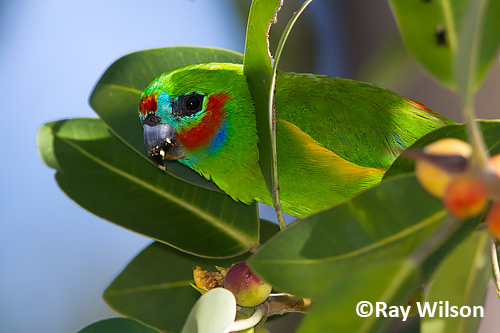
Double-eyed Fig-parrot (Cyclopsitta diopthalma macleayana)
I started my 3 month coast-to-coast Australian odyssey in Cairns in tropical northeast Queensland. I spent the first couple of days familiarising myself with the common species in, and around, the metropolitan area and since Cairns is a fairly green city there are loads of good places for birding within walking distance of the city centre.
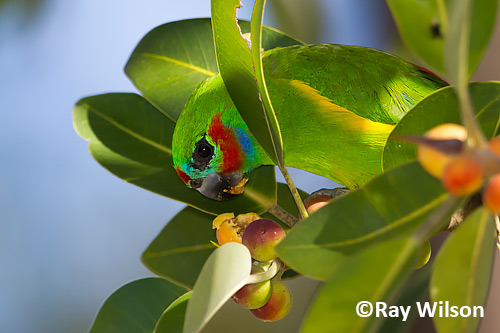
Double-eyed Fig-parrot (Cyclopsitta diopthalma macleayana)
Although my plan was to initially try to get up to speed with the common species as quickly as possible, one of the first birds I actually encountered was a small flock of Australia's smallest parrot: Double-eyed Fig-parrot. This range-restricted, endemic race macleayana is highly sought-after by visiting birders and, true to their name, were feeding on figs in the lower branches of a fruiting tree. What a way to start the trip!
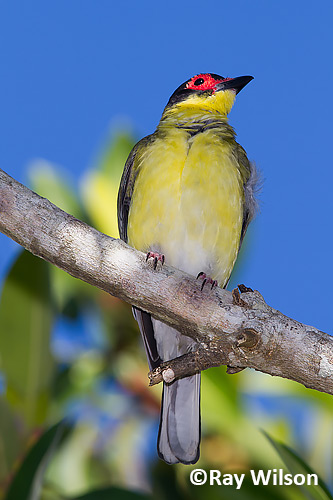 male |
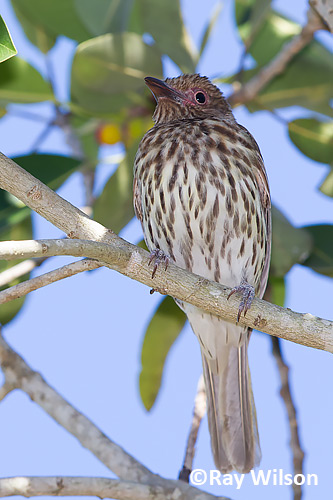 female |
Figbird (Sphecotheres viridis)
Also in the same tree was a flock of about 50 of the equally appropriately named Figbird, a common species in parkland and the edges of tropical rainforests along most of the east coast of Australia.
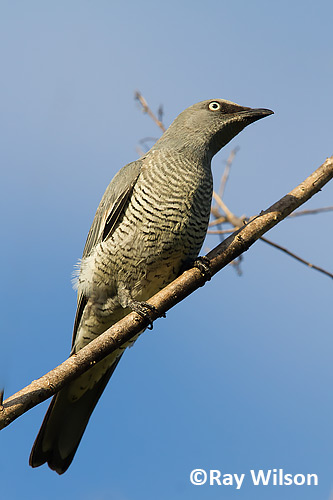 |
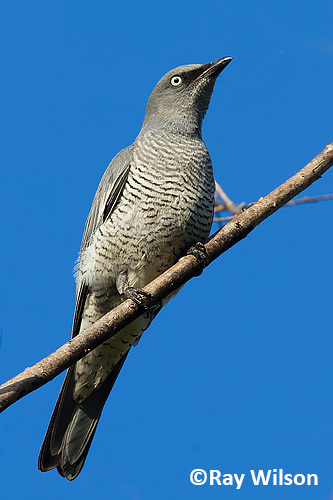 |
Barred Cuckoo-shrike (Coracina lineata)
A small flock of Barred Cuckoo-shrikes were associating with one of the larger flocks of Figbirds.
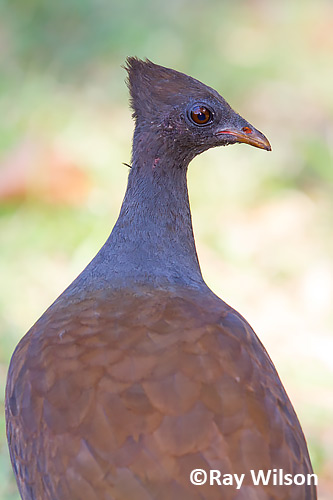
Orange-footed Scrubfowl (Megapodius reinwardt) |
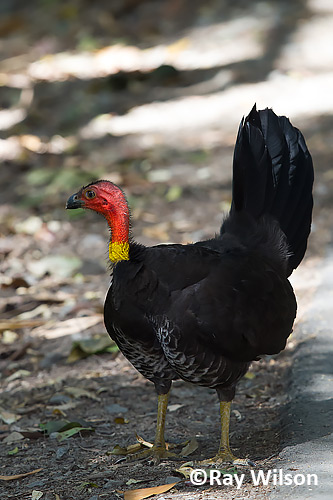
Australian Brush-turkey (Alectura lathami) |
Digging around in the leaf-litter both Orange-footed Scrubfowl and Australian Brush-turkey were ridiculously tame, but not particularly easy to photograph most of the time due to a combination of very little light reaching the floor of tropical rainforests and branches from the dense undergrowth constantly getting in the way, preventing a clear shot. Despite it being a bright, sunny afternoon, the above photos had to be taken at ISO1000 with a shutter speed of only 1/20th of a second!
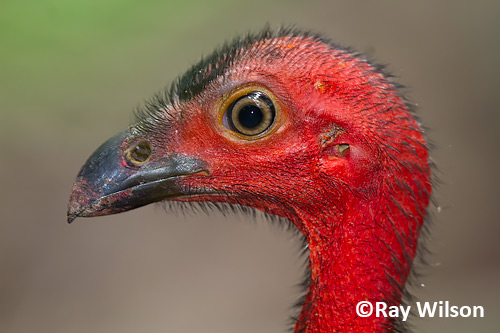
Australian Brush-turkey (Alectura lathami)
Both the Brush-turkey and Scrubfowl, being members of the Megapode family, build nests comprising of large mounds of earth into which they bury their eggs then carefully regulate the temperature of the earth by either adding earth (to cool it down) or removing earth (to increase the incubating temperature of the eggs). When the chicks hatch, they dig their way to the surface and are immediately completely independent of their parents.
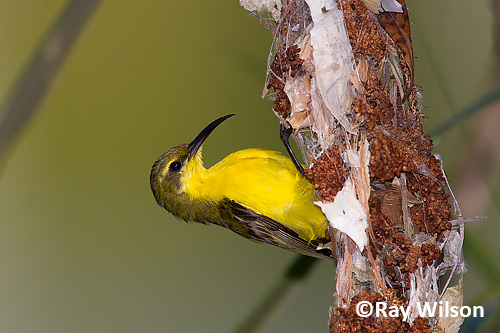
Yellow-bellied Sunbird (Nectarinia jugularis)
This female Yellow-bellied Sunbird, the only sunbird species that occurs in Australia, was collecting spider webs for the construction of her nest and was commuting back and forward to this spot every minute or so to collect another load.
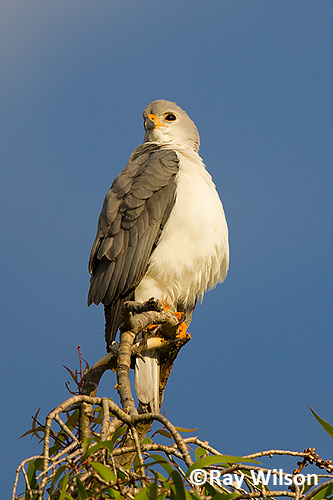
Grey Goshawk (Accipiter novaehollandiae)
A pair of Grey Goshawks were also busy with nest-building activity and could regularly be seen taking a break in the adjacent trees.
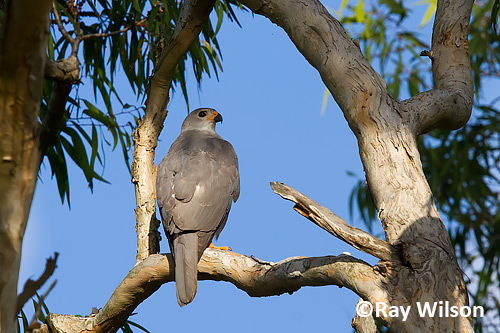
Grey Goshawk (Accipiter novaehollandiae)
Pied Imperial Pigeons had only just arrived back in Cairns a couple of weeks ago from their wintering grounds in Papua New Guinea and a large flock of them were roosting in a tall tree by the lake.
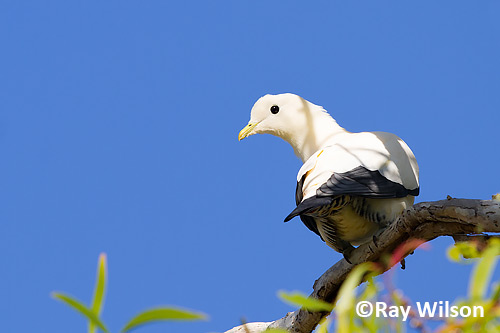
Pied Imperial Pigeon (Ducula bicolor)
This male Peaceful Dove was trying his best to woo his mate, puffing up his chest and displaying his tail feathers, but she was just ignoring him as she foraged for seeds at the edge of the path.
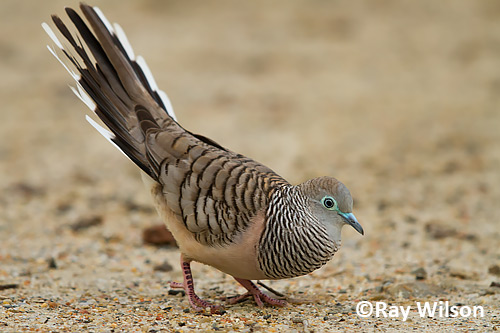
Peaceful Dove (Geopelia striata)
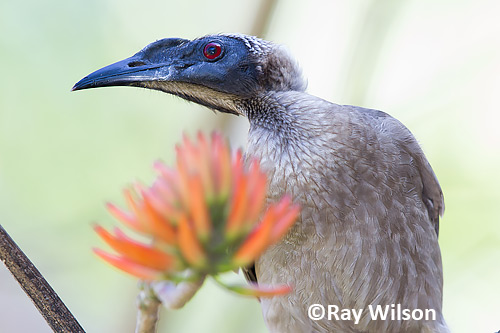
Helmeted Friarbird (Philemon buceroides)
Both Helmeted Friarbirds and Black Butcherbirds were common (and noisy!) species around the city parks.
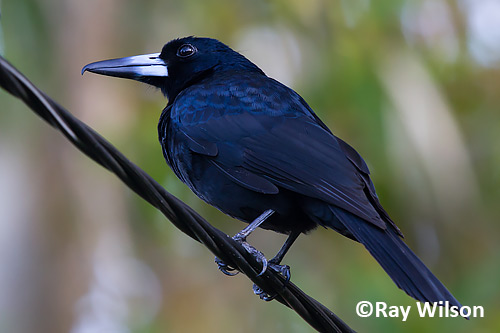
Black Butcherbird (Cracticus quoyi)
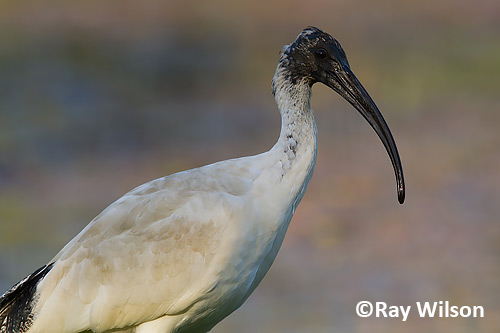
Australian White Ibis (Threskiornis molucca)
At Centenary Lakes, a reasonable selection of waterbirds could be found, including both Australian White Ibis and Straw-necked Ibis.
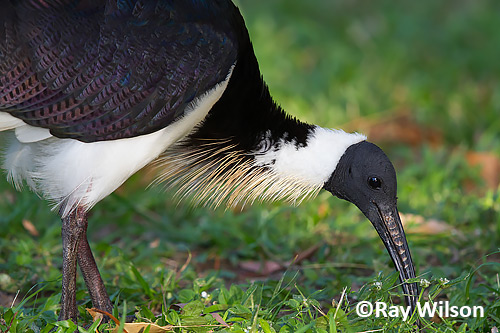
Straw-necked Ibis (Threskiornis spinicollis)
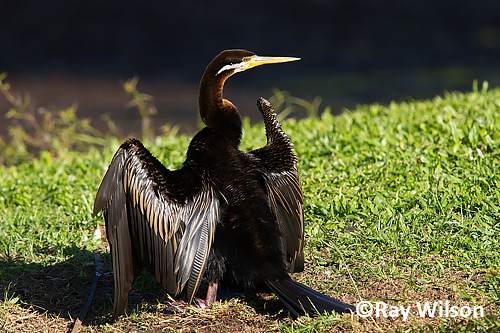
Australasian Darter (Anhinga melanogaster)
A couple of Darters were sitting in the banks of the freshwater lake with their wings out-stretched to dry their feathers.
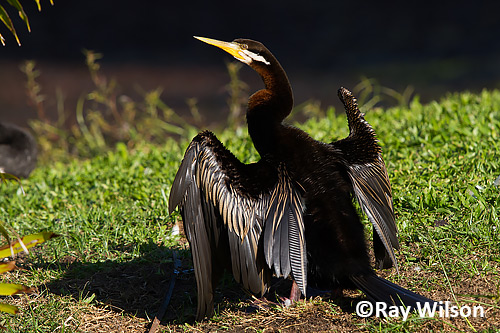
Australasian Darter (Anhinga melanogaster)
Darters lack the oils other waterbirds such as ducks use to waterproof their feathers, so they quite quickly become waterlogged and need to regularly haul out onto land and dry their feathers in the sun.
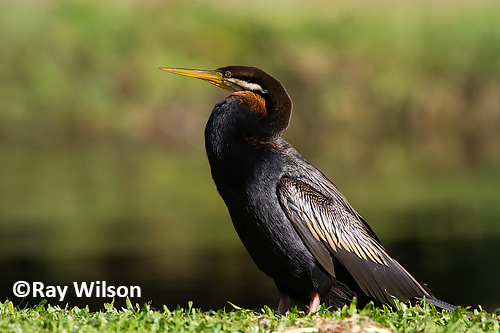
Australasian Darter (Anhinga melanogaster)
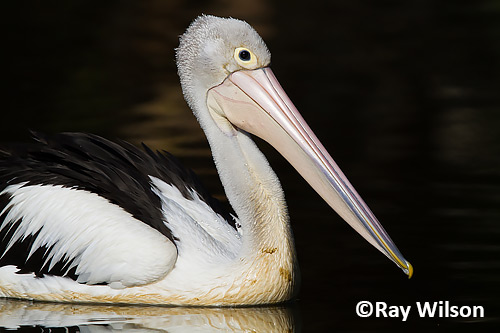
Australian Pelican (Pelicanus conspicillatus)
Waterfowl out on the lake included a few Australian Pelicans, Radjah Shelducks, Pacific Ducks and Dusky Moorhen.
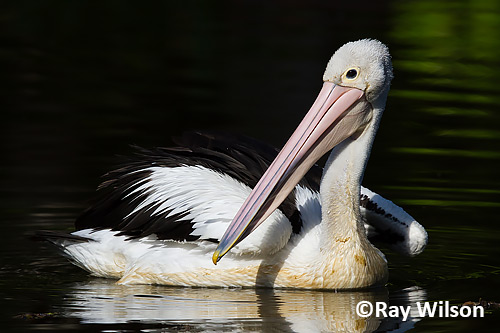
Australian Pelican (Pelicanus conspicillatus)
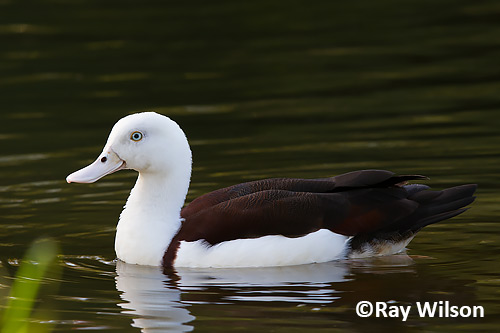
Radjah Shelduck (Tadorna radjah)
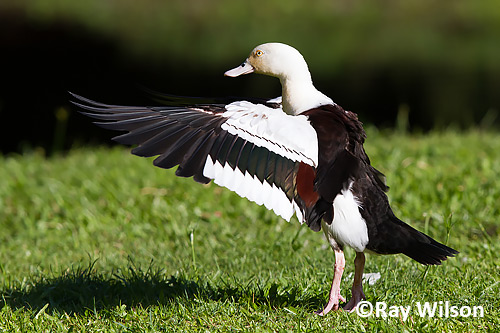
Radjah Shelduck (Tadorna radjah)
The colony of Spectacled Flying-foxes that roost in the trees outside of the city library has been under a lot of stress over the last few months due to the illegal and completely irresponsible actions of Cairns city council. For some reason they seem dead set on evicting the bats (illegal due to their endangered status) and totally abused their permit to prune the tree's canopy cover by 25% in May. The pruning was far more extreme than that and aerial photographs before and after the pruning show that about 60% of the foliage has been removed from the trees, drastically reducing the available cover for the bats causing many to suffer stress-related health problems. The timing of the pruning was particularly harmful to the females since many of them would have been pregnant at the time (the young are born in September). Local bat enthusiasts have brought the issue to the attention of the federal government and the actions of the City Council are currently under investigation.
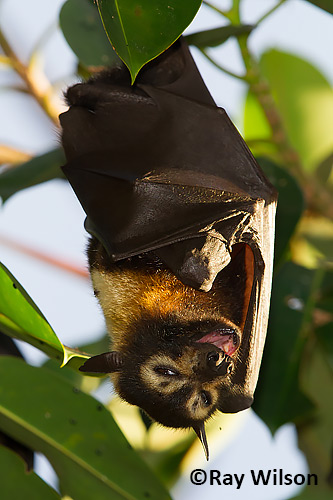
Spectacled Flying-fox (Pteropus conspicillatus)
Ray Wilson owns the copyright of all images on this site.
They may not be used or copied in any form without prior written permission.
raywilsonphotography@googlemail.com